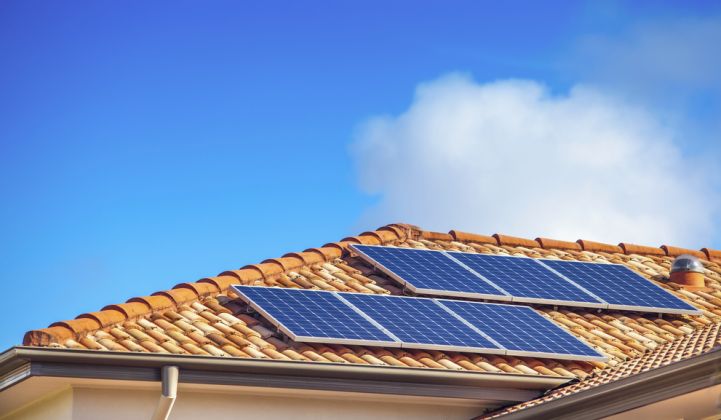Lancaster, California has moved beyond requiring solar panels on the rooftops of new houses. A newly passed city ordinance stipulates that those rooftop arrays meet the energy needs of those homes.
The city started requiring solar on new homes back in 2014, pioneering a policy that has since been adopted by Sebastopol, Santa Monica and San Francisco, and which was introduced into the California State Senate in January. Lancaster’s “Zero Net Energy” policy, passed last week, mandates that those rooftop arrays contain 2 watts per square foot of real estate.
The idea is that new houses added onto the grid cover their own energy needs for their occupants. Not every house will be able to support that much solar capacity, so builders also have an option to pay an in-lieu fee of $1.40 per square feet of constructed home, or a combination of solar panels and fee. The fee option unlocks a 50 percent discount on the generation component of the homeowners’ electricity bill for 20 years.
"The Zero Net Energy Home Ordinance expands upon Lancaster’s residential solar ordinance so that new homes built in Lancaster now will not only be environmentally friendly, but have a zero net impact on our environment, while reducing energy costs for the homeowners," said Republican Mayor R. Rex Parris in a statement. "This is a great stride in Lancaster’s journey to become a Zero Net City.”
The city has been working to achieve zero net energy status, which involves leveraging clean renewables to produce more energy than it consumes, since 2011. The implementation of the latest rule must wait for a feasibility study to wrap up, expected in April. Then Lancaster will seek approval from the California Energy Commission. If everything goes smoothly, the rule will take effect before the close of 2017.
There are some notable implications from the rule as written.
It represents a bolder formulation of the principle that residential solar should be installed at the point of least resistance. It takes time and effort for a homeowner to navigate the bustling marketplace of solar installers, host the installation and figure out financing to pay for it.
Policies like the ones Lancaster created shift those tasks to home developers, who are experts at contracting structural additions to houses. Any cost incurred by the solar can then wrap into the mortgage, where it will appear as a marginal increase, without the need for separate financing. The buyer moves in to a home that already generates electricity.
Now those houses will generate more than they were required to before. It’s worth noting, though, that square footage is not a perfect stand-in for energy demand. A house with a hot tub, multiple refrigerators and a Tesla will use more than an equally sized abode that lacks those things.
The focus on solar generation as the be-all, end-all of sustainable living could run into some issues down the road, as the role of intermittent generation evolves in California. The major utilities are grappling with how to handle the influx of solar production at midday, and the subsequent ramp-up in demand as the sun drops off.
The state's utility regulator recently approved a switch from pure net energy metering to a system where solar homes get charged for their time of use and could earn less money over time for selling surplus energy back to the grid.
In other words, a Net Zero Energy plan could need some fine-tuning before going statewide, where it would have a significant impact on those issues already facing the grid. Residential energy storage systems could play a role by letting the homeowners use their solar generation in the evening.
It’s a bit early in the evolution of these products to start demanding homeowners add them too. The people who move into NZE homes, though, may choose to add a battery system if it makes sense for optimizing their solar use, or if they want solar-powered backup in case the grid goes down.
As a smaller city in a sunny part of the state, Lancaster can nimbly experiment with solar home policies and break a trail for others to follow. California is slated to enforce similar measures statewide in 2020, so consider this an appetizer for a bigger solar course to come.



